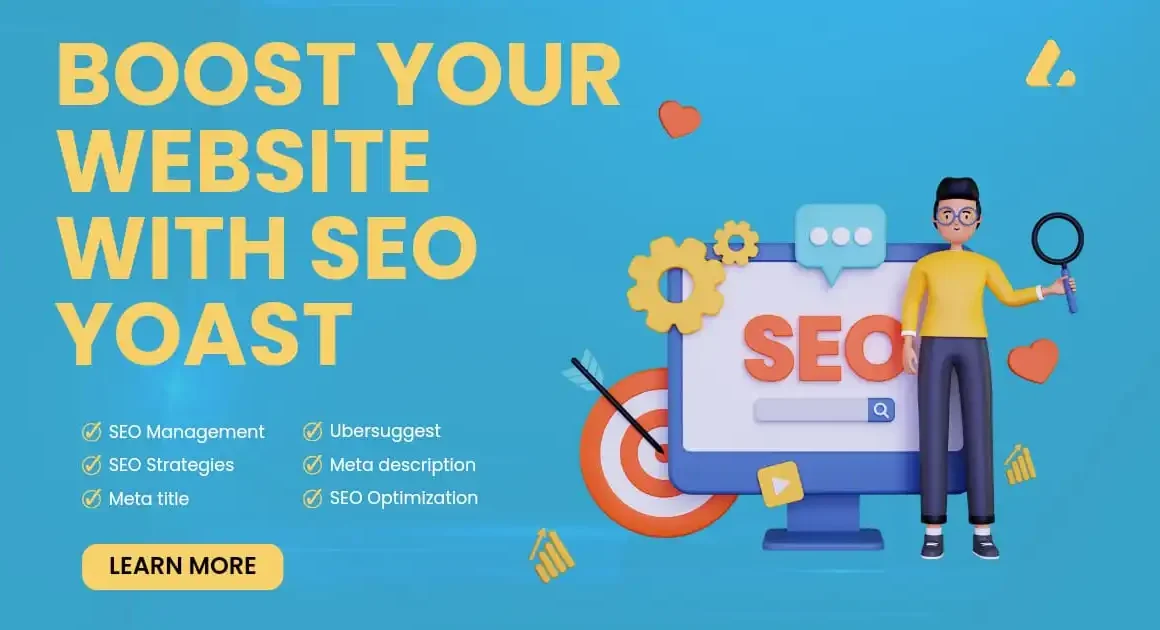Imagine entering the wide internet space with a brand-new website. It would be like riding a ship without a compass if you didn’t have a strong SEO (Search Engine Optimization) plan. We’ve put together a list of the top 20 SEO strategies especially for new websites to help you navigate the unpredictable world of search engine rankings. Whether you’re a blogger, small business owner, or an aspiring entrepreneur, following these pointers will put you on the correct track to building your online presence and attracting natural search traffic to your website.
1 Conduct Thorough Keyword Research
Analyzing keywords is the foundation of every effective SEO strategy. Spend a few minutes figuring out what terms and phrases people in your sector are using to search for. You may find the most important keywords to target with the use of tools like Moz Keyword Explorer, SEMrush, and Google Keyword Planner.
- To find appropriate terms, use keyword research tools.
- prioritize long-tail keywords to improve targeting.
- Give top priority to terms with low competition and high search volume.
2. Optimize On-Page Elements
On-page optimization involves optimizing various elements of your website to make it more search engine-friendly. Pay attention to your page titles, meta descriptions, headings (H1, H2, etc.), and URL structures. Incorporate relevant keywords naturally into these elements to improve your website’s visibility to search engines.
- Craft compelling page titles that accurately represent your content.
- Write unique and engaging meta descriptions to encourage click-throughs.
- Use headings to structure your content and include keywords where appropriate.
- Create clean and descriptive URLs that users and search engines can understand.
3. Optimize Page Loading Speed
Website speed plays a crucial role in user experience and search engine rankings. Slow-loading websites lead to higher bounce rates and lower ranking positions. Compress images, minify code, leverage browser caching, and choose a reliable hosting provider to improve your website’s loading speed.
- Optimize images by compressing them without compromising quality.
- Minify your JavaScript, CSS, and HTML code to reduce file sizes.
- Leverage browser caching to store certain elements of your website locally.
- Choose a reliable hosting provider with fast servers to ensure optimal performance.
4. Create Unique, High-Quality Content
Content is the backbone of your website’s SEO optimization strategy. Craft unique, valuable, and relevant content that offers solutions to your target audience’s problems. Publishing high-quality articles, blog posts, guides, or videos consistently will establish your website as a trustworthy source of information, leading to increased organic traffic and higher search engine rankings.
- Conduct thorough research and provide accurate information.
- Write in-depth, comprehensive articles that answer users’ queries.
- Incorporate relevant keywords naturally into your content.
- Aim to provide value and engage your audience with every piece of content.
5. Optimize for Mobile Devices
In today’s mobile-first world, optimizing your website for mobile devices is imperative. Ensure your website is responsive, meaning it adapts to different screen sizes seamlessly. Mobile-friendly websites not only provide a better user experience but also rank higher in search results.
- Use responsive web design to create a mobile-friendly experience.
- Prioritize mobile page loading speed.
- Optimize images and fonts for smaller screens.
- Test your website on various devices to ensure consistent performance.
6. Build a Strong Backlink Profile
Backlinks, or links from other websites to yours, are like votes of confidence in the eyes of search engines. Earn high-quality backlinks from reputable websites in your industry to boost your website’s authority. Focus on natural link building strategies such as creating exceptional content, reaching out to influencers, or guest blogging.
- Create engaging and shareable content that attracts natural backlinks.
- Reach out to influencers or industry leaders for collaboration opportunities.
- Guest blog on reputable websites to showcase your expertise.
- Monitor your backlink profile using tools like Ahrefs or Majestic.
7. Leverage Social Media
Social media platforms are powerful tools for promoting your website and building brand awareness. Share your content on platforms where your target audience is active. Engage with your followers, respond to comments, and encourage sharing to expand your reach and potentially attract more backlinks.
- Identify the social media platforms that resonate with your audience.
- Use eye-catching visuals and compelling captions to promote your content.
- Engage with your audience by responding to comments and starting conversations.
- Incorporate social sharing buttons on your website for easy content sharing.
8. Optimize Your Site’s Navigation
A well-organized and intuitive website navigation helps both users and search engines find their way around your site. Ensure your navigation menu is clear, concise, and accessible across all devices. Use descriptive anchor texts for internal links to help search engines understand the context of your pages.
- Keep your navigation menu simple and easy to understand.
- Include relevant keywords in your anchor texts for internal links.
- Implement a breadcrumb trail for better navigation.
- Optimize your website’s structure to improve crawlability.
9. Regularly Publish Fresh Content
Search engines love fresh content. By publishing new content regularly, you signal to search engines that your website is active and relevant. This can result in increased crawl frequency and better indexing. Develop a content calendar to keep track of your publishing schedule and ensure consistency.
- Plan and create a content calendar to maintain a publishing schedule.
- Aim to publish fresh content at least once a week.
- Update and repurpose existing content to keep it relevant.
- Stay up to date with industry trends and news for timely content creation.
10. “Optimization of Your Site’s Structure”
A well-structured website enables search engines to understand the hierarchy and relationships among your pages. Implement a clear URL structure, use meaningful category and subcategory names, and organize your content into logical groups. This improves both user experience and search engine visibility.
- Use descriptive and readable URLs that reflect your content.
- Categorize and organize your content into logical groups.
- Implement internal linking between related pages or articles.
- Create an XML sitemap to help search engines crawl and index your site.
11. Optimization for Local SEO is crucial
If your business caters to a specific location, optimization for local SEO is crucial. Claim and optimize your Google My Business listing, ensure your NAP (Name, Address, Phone Number) is consistent across all platforms, and encourage customers to leave reviews. This will help your website appear in local search results and attract geographically targeted traffic.
- Claim and verify your Google My Business listing.
- Optimize your NAP consistency across different directories and platforms.
- Encourage genuine customer reviews on Google and other platforms.
- Optimize your website’s content with location-specific keywords.
12. Monitor and Analyze Your Website’s Performance
Regularly monitor your website’s performance to identify areas for improvement. Use tools like Google Analytics, Google Search Console, or Bing Webmaster Tools to analyze user behavior, track organic traffic, and identify technical issues. This data will help you make data-driven decisions to optimize your website further.
- Set up Google Analytics and Google Search Console for your website.
- Track and analyze metrics like bounce rate, time on page, and conversion rates.
- Monitor keyword rankings and organic traffic trends.
- Use heatmaps or user recording tools to understand user behavior on your site.
13. Maximize optimization for Featured Snippets
Featured snippets are concise, highlighted pieces of information that appear at the top of search results. Optimizing your content to appear as a featured snippet can significantly boost your visibility and drive more organic traffic. Focus on providing direct and concise answers to frequently asked questions in your industry.
- Identify common questions or queries your target audience has.
- Create comprehensive content that specifically addresses these questions.
- Structure your content to include clear headings and bullet points.
- Implement schema markup to help search engines understand your content better.
14. Image Optimization for SEO Mastery
Images not only enhance your website’s visual appeal but also play a role in SEO optimization . Optimize your images by compressing them, adding alt text, and using descriptive file names. This helps search engines understand the content of your images and improves overall crawlability.
- Compress images without compromising quality to improve loading speed.
- Use descriptive file names that reflect the image’s content.
- Add alt text to provide textual descriptions of your images.
- Choose the appropriate image format (JPEG, PNG, etc.) for optimal performance.
15. Secure Your Website with HTTPS
Website security and privacy are crucial for both user trust and search engine rankings. Implement HTTPS (Hypertext Transfer Protocol Secure) to encrypt the connection between your website and users’ browsers. Google also prioritizes secure websites in search rankings, giving you an SEO advantage.
- Obtain an SSL certificate to enable HTTPS.
- Ensure your entire website is served over HTTPS, including internal links.
- Update all references to your website to reflect the HTTPS version.
- Regularly monitor for security issues and vulnerabilities.
16. Encourage User Engagement and Social Sharing
User engagement and social sharing send positive signals to search engines, indicating that your content is valuable and relevant. Implement interactive elements such as comment sections, social sharing buttons, quizzes, or surveys to encourage user participation. This can lead to increased time on site and more backlinks.
- Include comment sections to encourage user discussions.
- Implement social sharing buttons for easy content sharing.
- Create interactive elements like quizzes or surveys to engage users.
- Respond to user comments and foster a sense of community.
17. Avoid Duplicate Content
Duplicate content can harm your website’s SEO efforts. Ensure your content is unique and not copied from other sources, including your own website. Use canonical tags to indicate the preferred version of a page if you have similar content on different URLs.
- Create original content for each page and avoid duplicating text.
- Use canonical tags for similar or duplicate content on different URLs.
- Avoid scraping or stealing content from other websites.
- Regularly check for and address any instances of unintentional duplicate content.
18. Optimization For Your Website’s Meta Tags
Meta tags provide additional information about your web pages to search engines. Optimize your meta title and description tags by including relevant keywords and crafting compelling copy that entices users to click. Although meta tags don’t directly impact rankings, they greatly influence click-through rates.
- Craft unique and descriptive meta titles for each page.
- Write engaging meta descriptions that accurately reflect your content.
- Include relevant keywords naturally in your meta tags.
- Keep meta titles under 60 characters and meta descriptions under 160 characters.
19. Understand and optimization for User Intent
User intent refers to the purpose or goal behind users’ searches. Understanding their intent allows you to create relevant content that fulfills their needs. Conduct keyword research with user intent in mind and create content that matches different stages of the buyer’s journey.
- Identify the various stages of the buyer’s journey.
- Create content that aligns with each stage, addressing different user intents.
- Optimize content to provide the most relevant and helpful answers to users’ queries.
- Analyze search results to understand the type of content that ranks well for specific user intents.
20. Stay Up-to-Date with SEO optimization Industry Trends
SEO is an ever-evolving field. Stay informed about the latest trends, algorithm updates, and best practices to maintain a competitive edge. Follow reputable SEO blogs, attend webinars, or join online communities to stay up-to-date with the latest SEO strategies.
- Regularly read trusted SEO blogs, such as Moz, Search Engine Journal, or Search Engine Land.
- Attend webinars or conferences to learn from industry experts.
- Participate in online forums or communities to gain insights from fellow professionals.
- Continuously adapt your SEO strategy based on emerging trends and changes.
Launching a new website can be intimidating, but with the right SEO optimization strategy, you can sail towards success. Implement these 20 major SEO optimization tips for your new website to increase visibility, drive organic traffic, and establish a strong online presence. Remember, SEO optimization is an ongoing process, so monitor your progress, adapt your strategy, and keep optimizing to stay ahead of the competition.
Yoast SEO is a powerful WordPress plugin designed to enhance the search engine optimization (SEO) of your website. It provides valuable tools and features to optimize content, improve readability, and increase the overall visibility of your site on search engines. With Yoast SEO optimization , users can easily manage key SEO optimization elements, such as meta titles, meta descriptions, and XML sitemaps, ensuring their content is well-optimized for search engine algorithms. The plugin also offers real-time content analysis, making it a valuable tool for both beginners and experienced website owners looking to improve their online presence.



